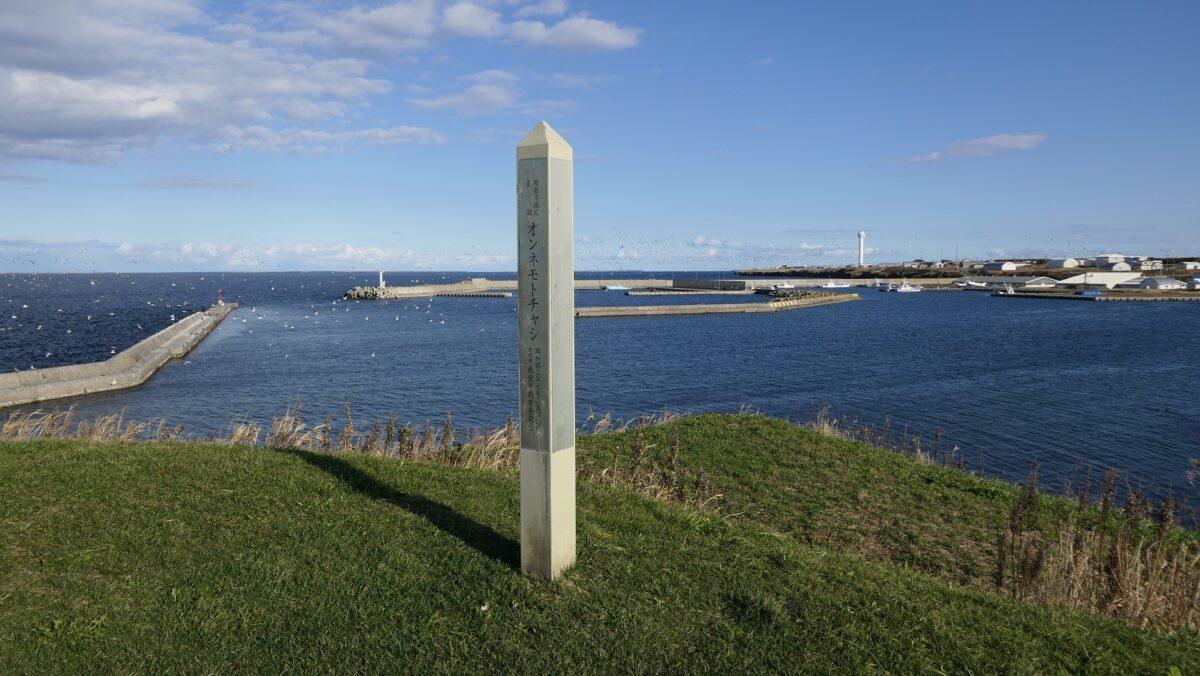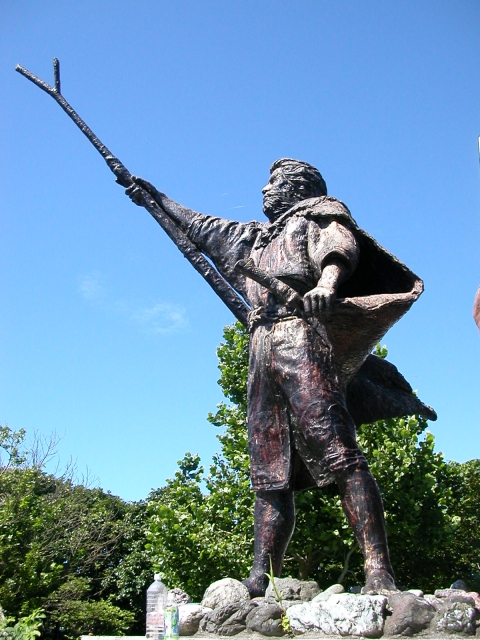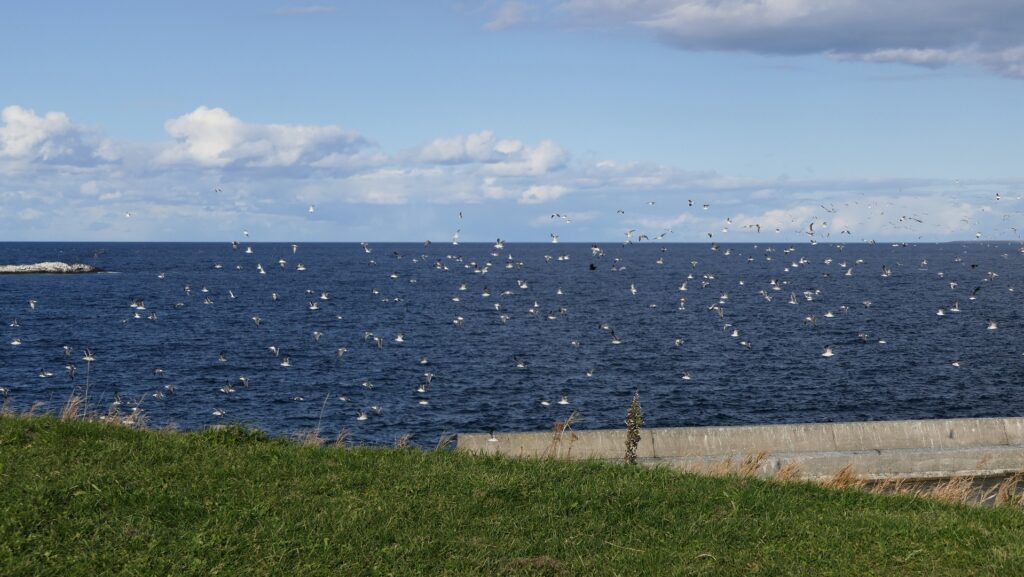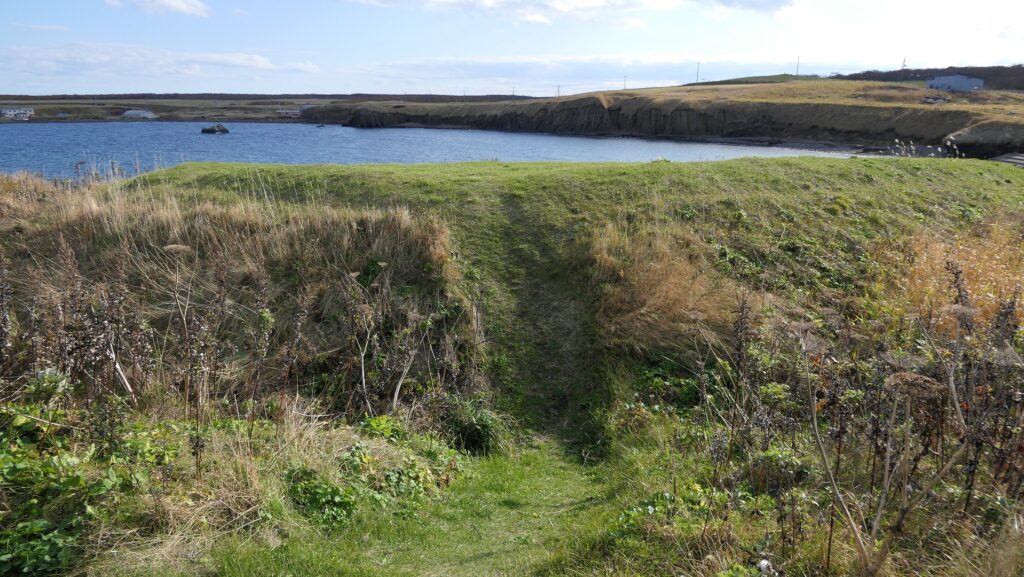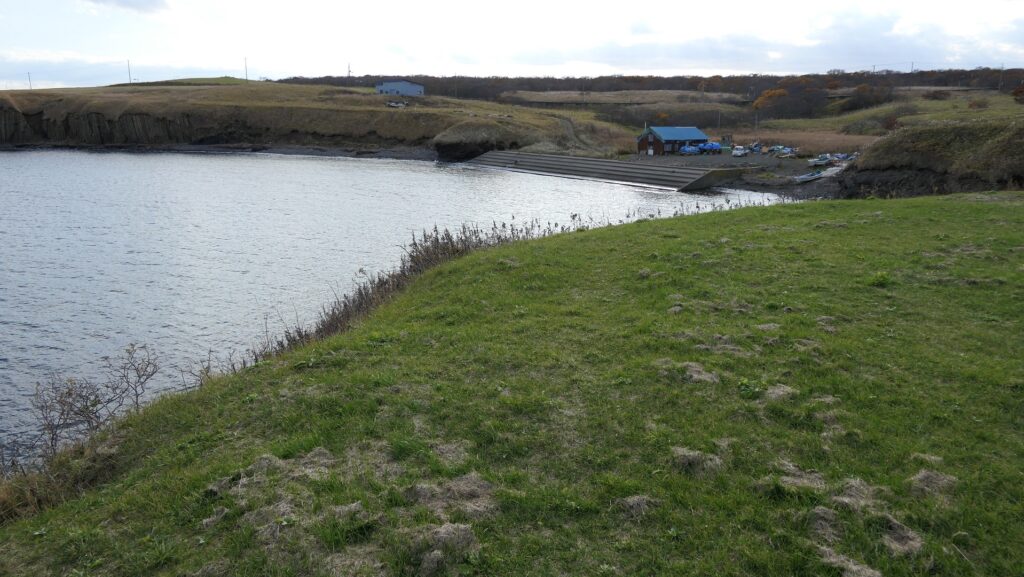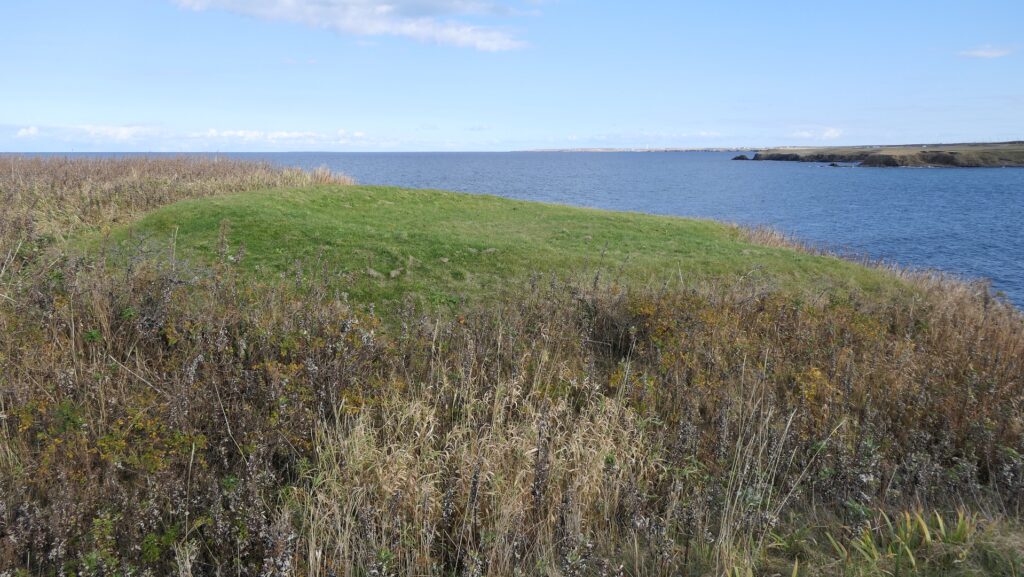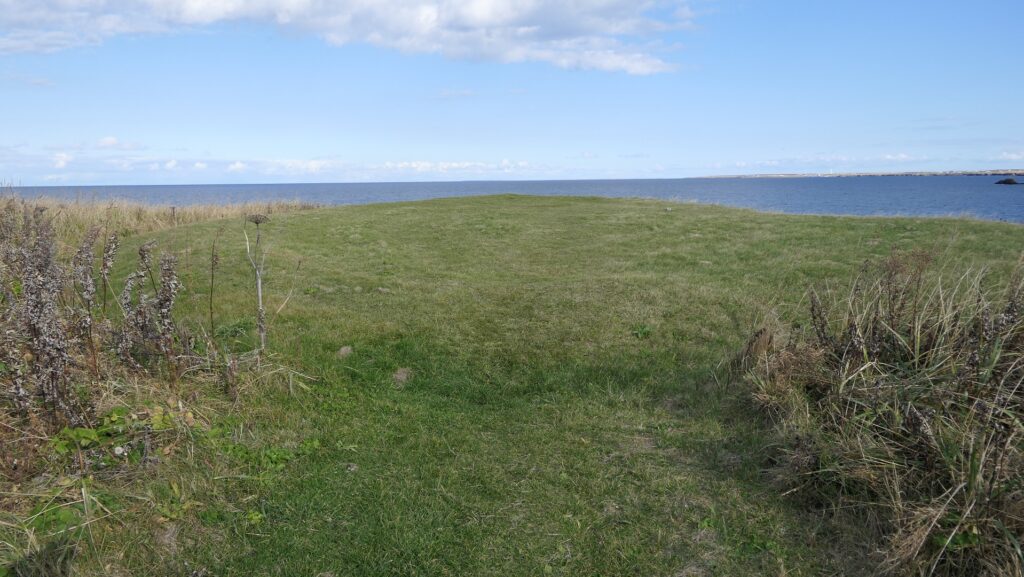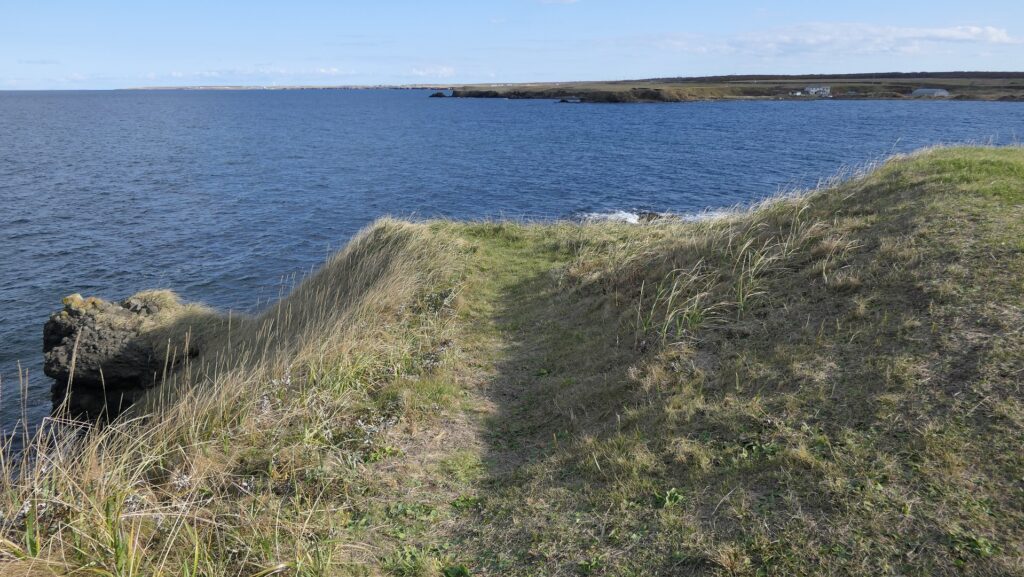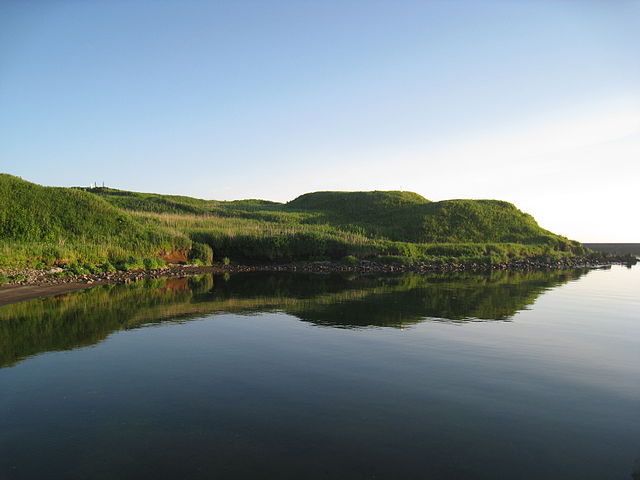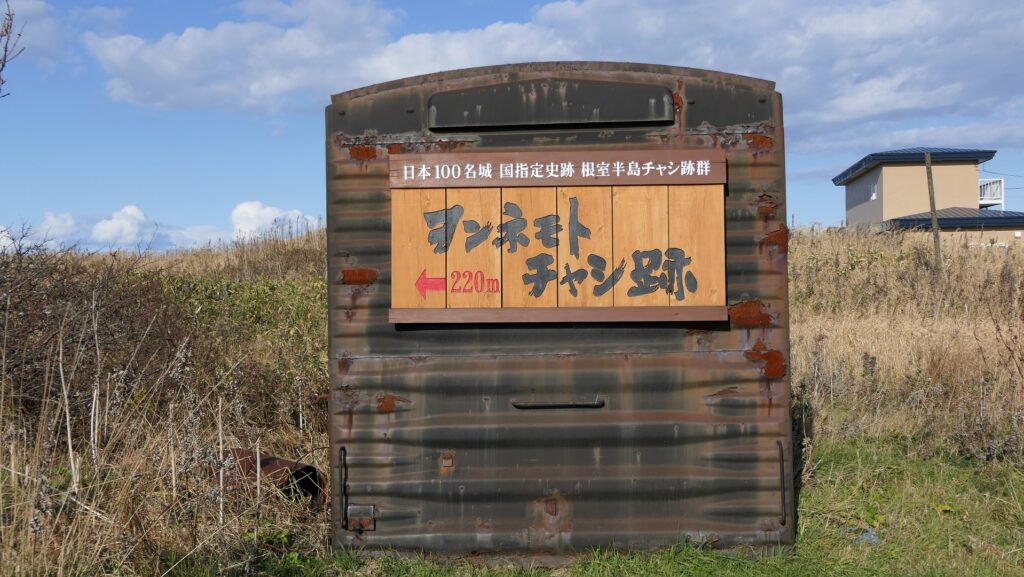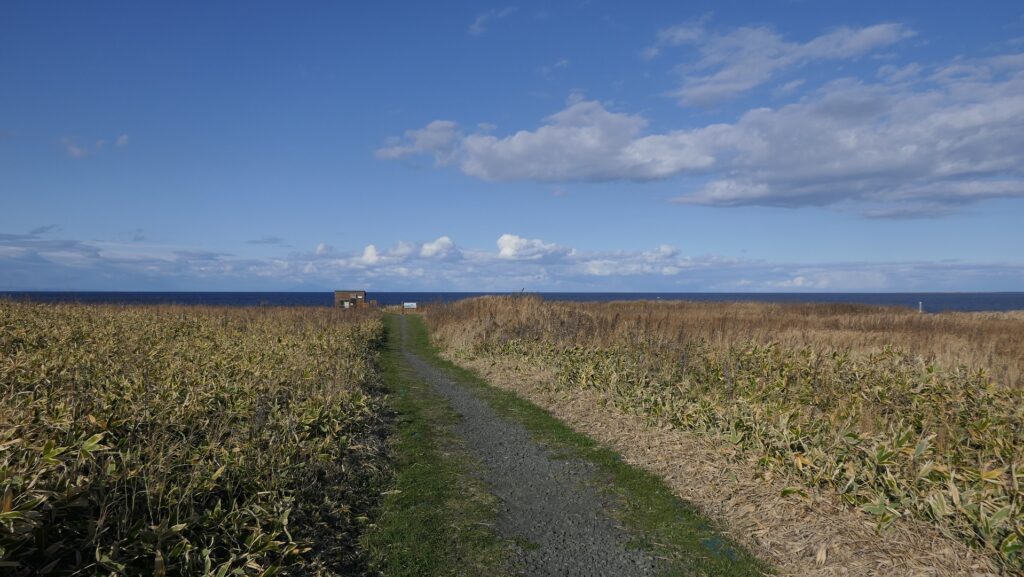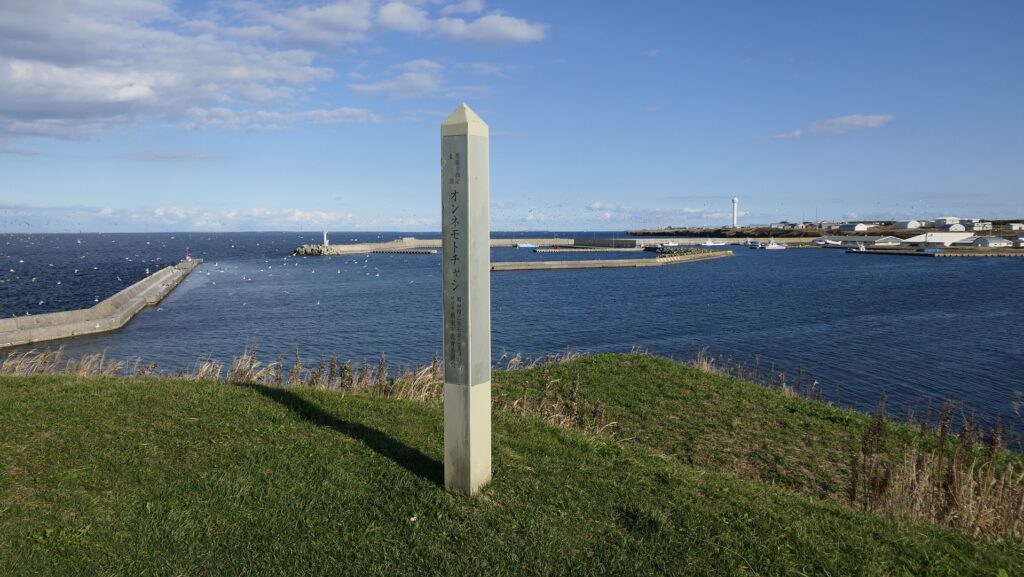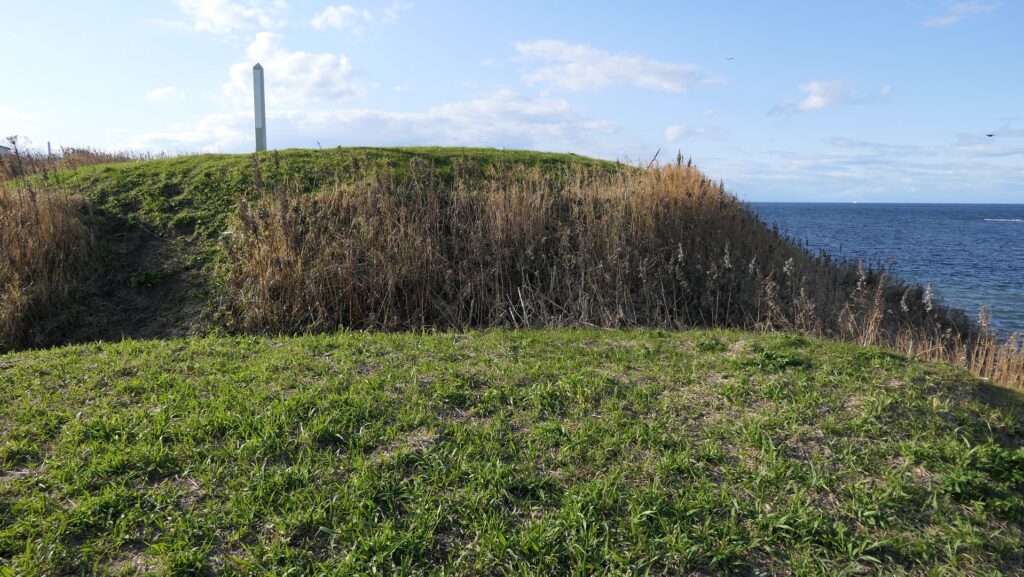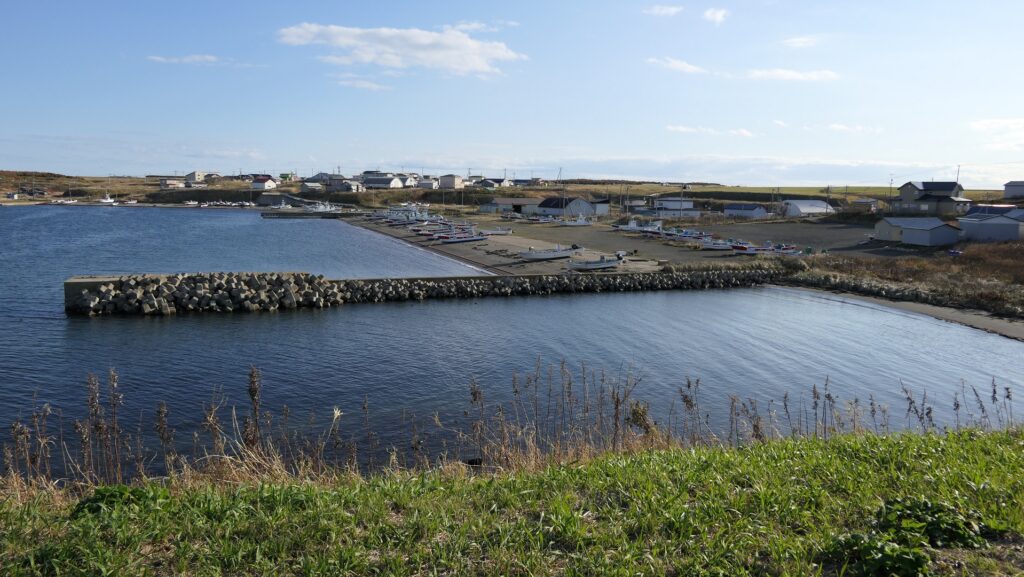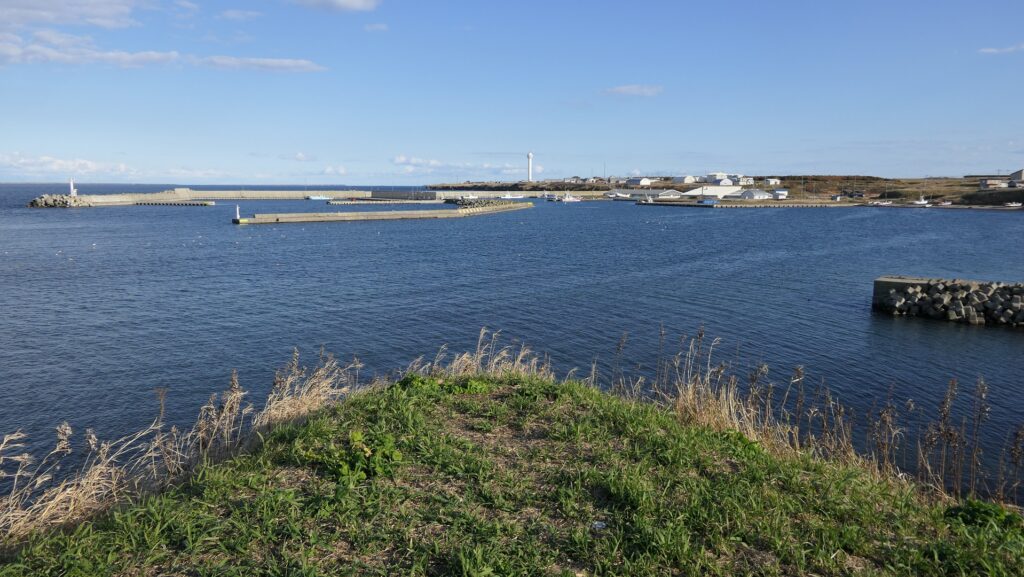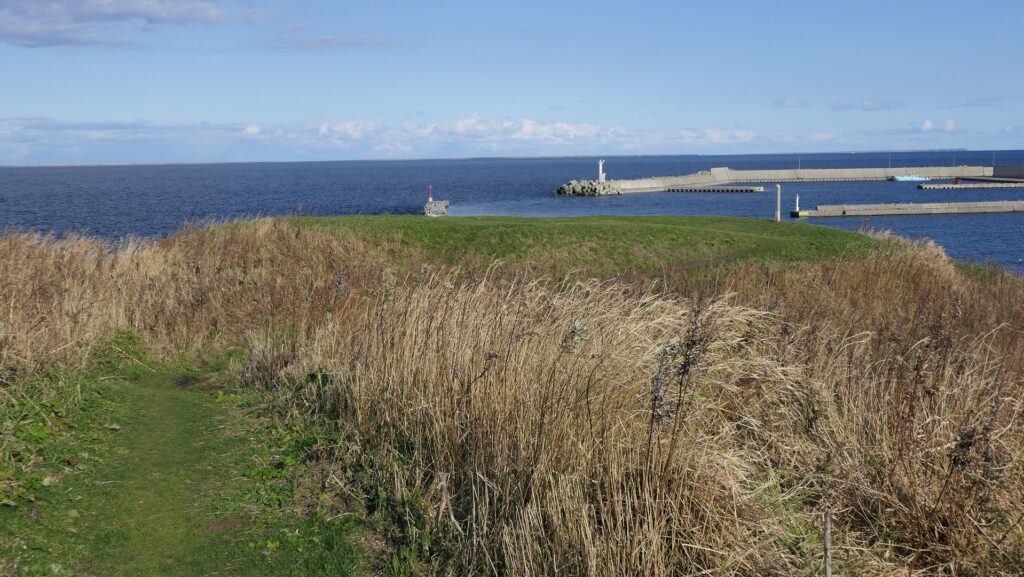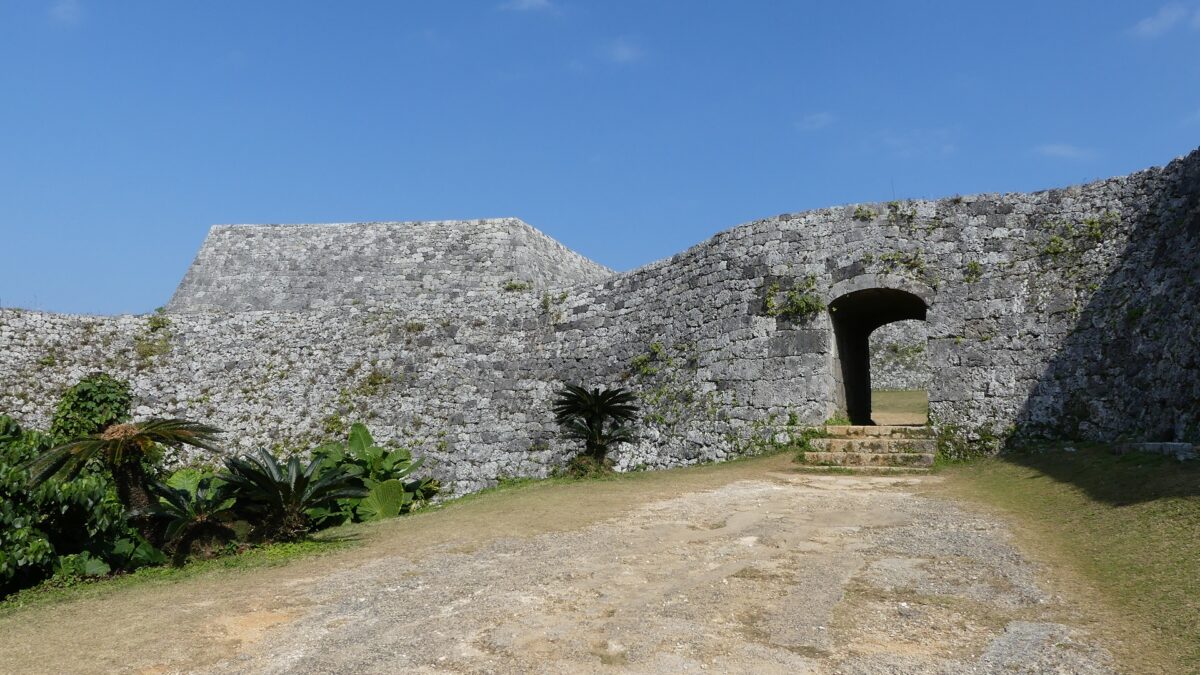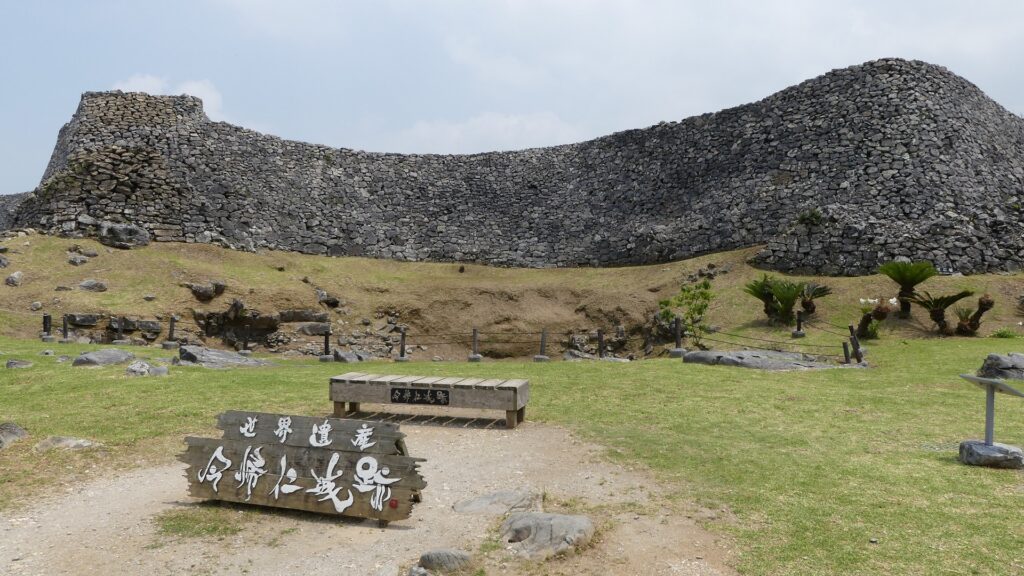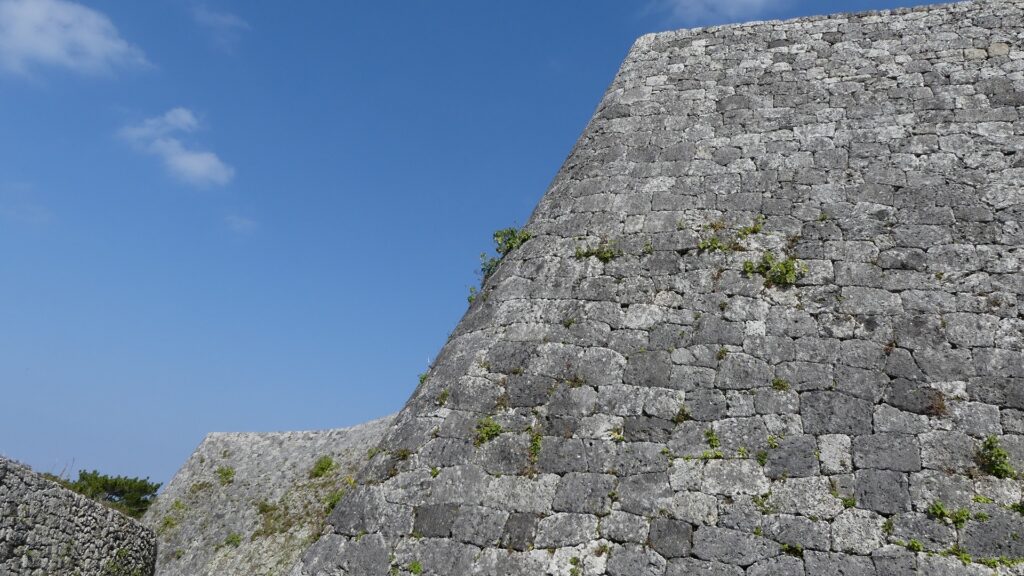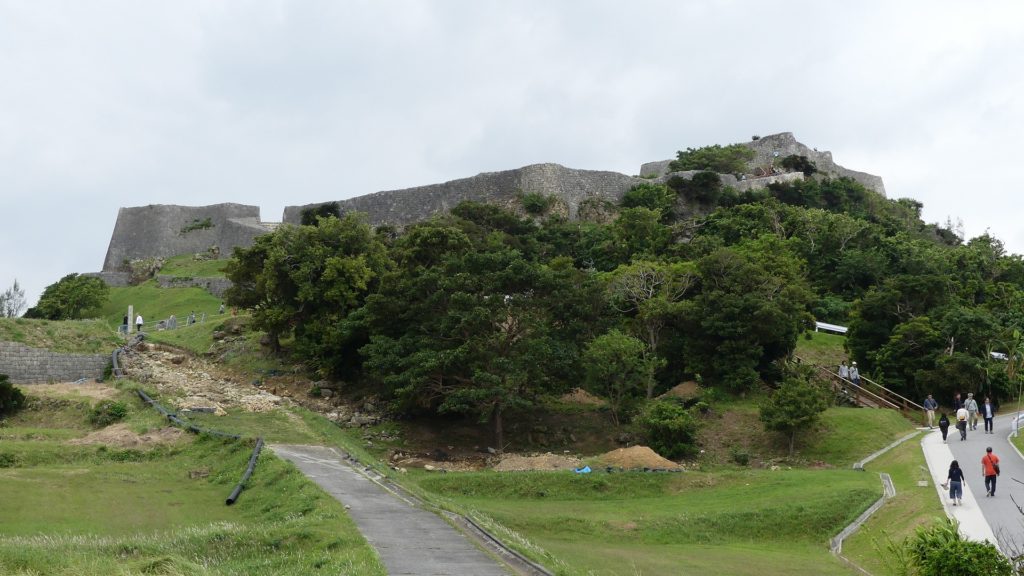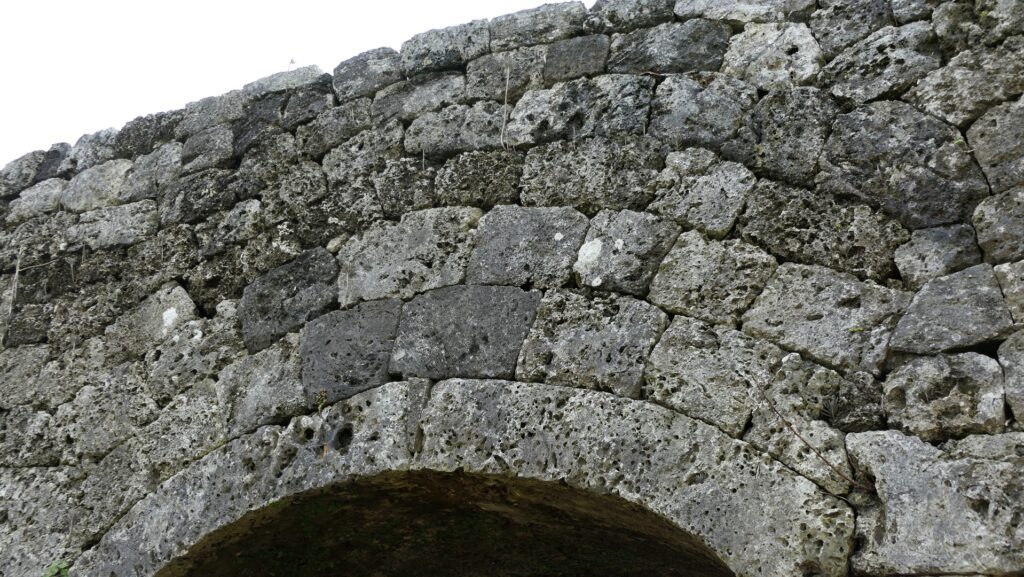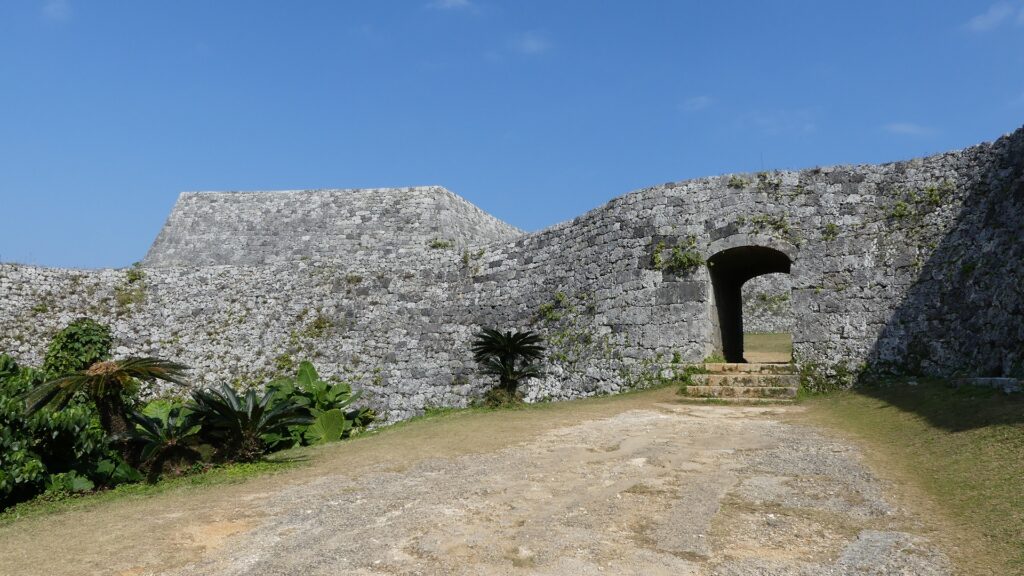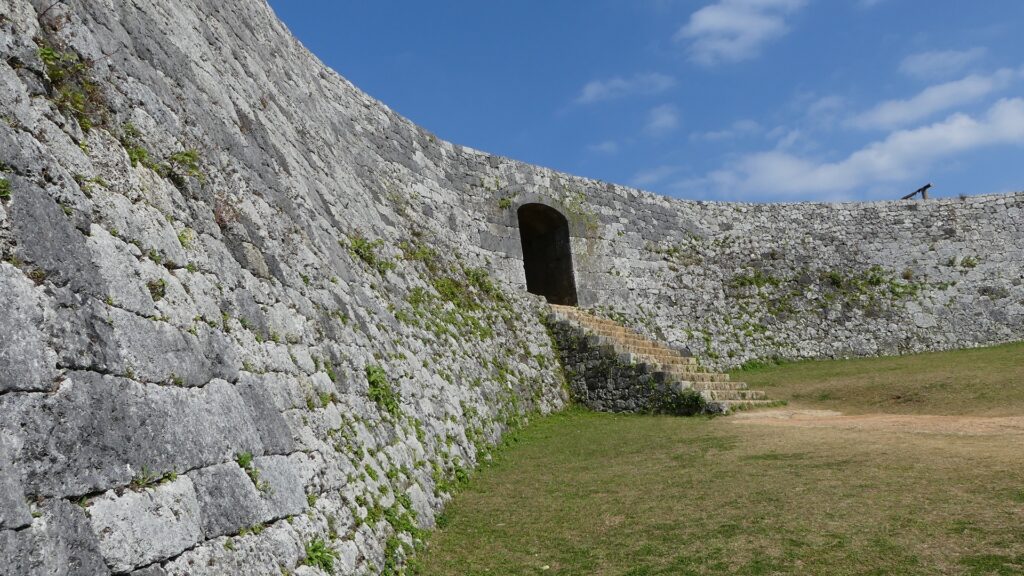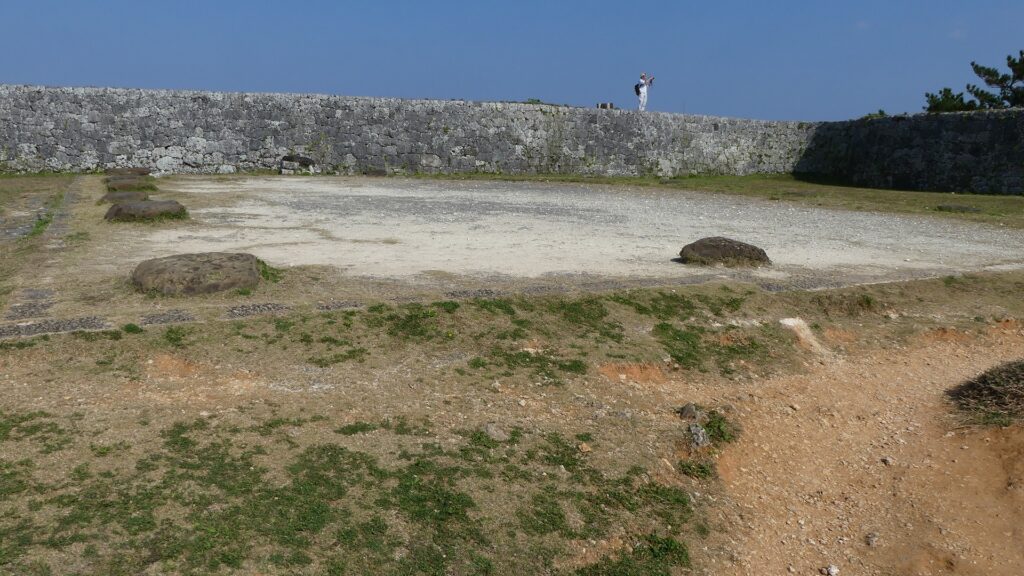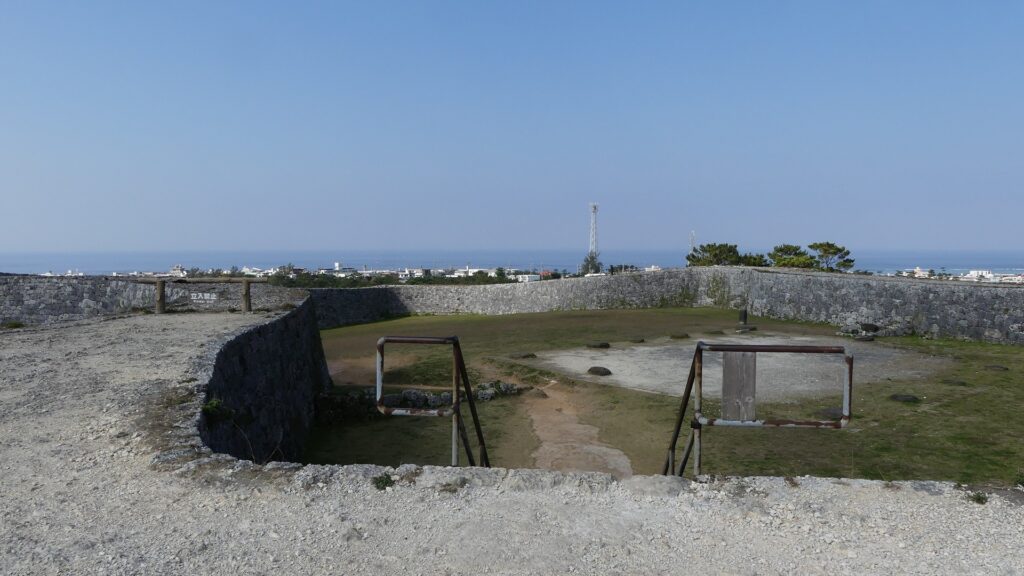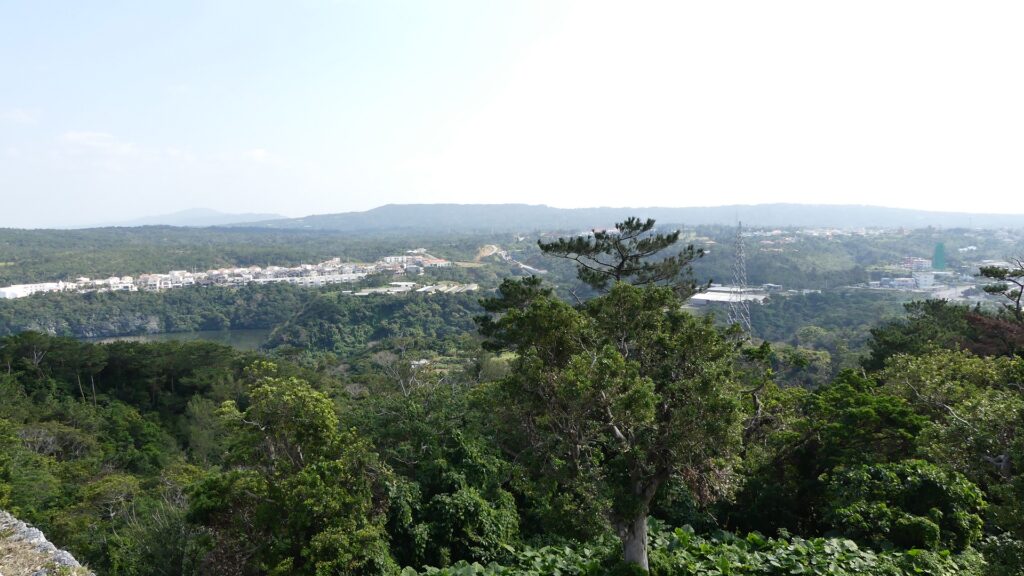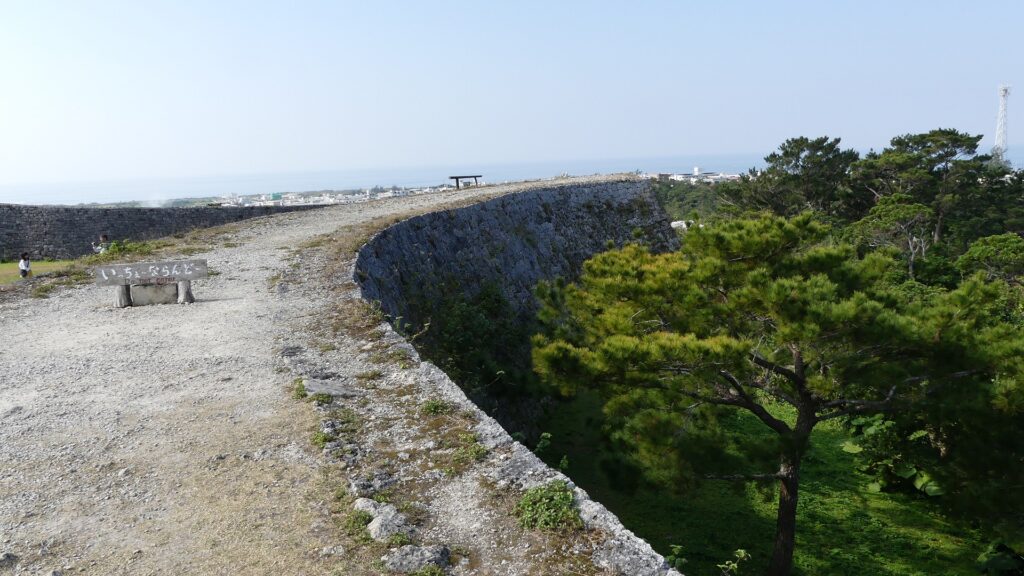立地と歴史~Location and History
楠木正成の活躍~Activities of Masashige Kusunoki
楠木正成は14世紀に河内国(現在の大阪府東部)を根拠地とした有力武将でした。彼は最初は、中世に武士のための政権を担った鎌倉幕府に仕えていました。しかし、1331年に後醍醐天皇が幕府に反抗したとき、正成は天皇を助け、赤阪城で幕府と戦いました。ところが、この城は急ごしらえで、敵と戦うには不十分であったこともあり、正成は敗走せざるを得ず、そして姿をくらましました。天皇は幕府に捕らえられ、日本海の隠岐の島に配流されました。
Masashige Kusunoki was a great general based in Kawachi Province (what is now the eastern part of Osaka Prefecture) in the 14th century. He first worked under the Kamakura Shogunate, a government body for warriors in the middle ages, but when Emperor Godaigo was against the Shogunate in 1331, he supported the Emperor fighting with the Shogunate in Akasaka Castle. However, the castle was built in a hurry and wasn’t very strong enough to protect against enemies, so Masashige had to run away and disappear. The Emperor was caught by the Shogunate and brought to Okinoshima Island in Japan Sea.
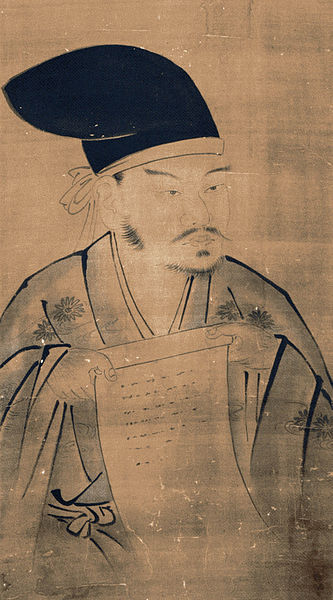
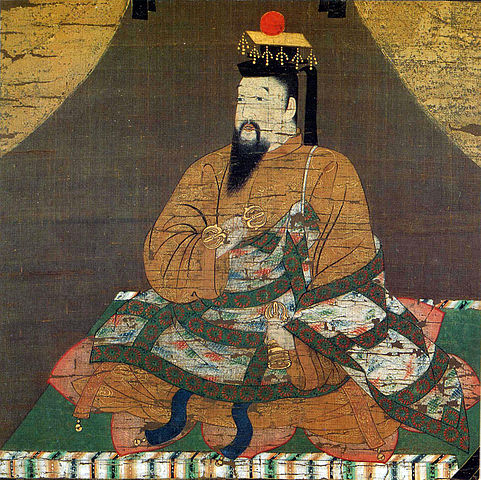
1333年、正成は雪辱を期し、上赤阪、下赤阪、そして千早といった城のネットワーク作りを開始しました。千早城は、その内で詰めの城の役割でした。この城は、河内と大和国(現在の奈良県)を結ぶ千早街道沿いにあり、日本の山岳修業の流派である修験道の場として知られた金剛山へ向かう途上にありました。そしてこの城は、全面を谷に囲まれた峰の上に位置していました。
In 1333, Masashige wanted to take revenge, so he started making his new network of castles: Kami-Akasaka, Shimo-Akasaka, and Chihaya. Chihaya Castle was the last one of the network. It was located alongside Chihaya Road connecting Kawachi and Yamato (now Nara Prefecture) Provinces, and
on the way to Mt. Kongosan which was known for the training of Shugen-do, i.e., Japanese mountain asceticism. The castle was also on one peak, surrounded by valleys on all sides.
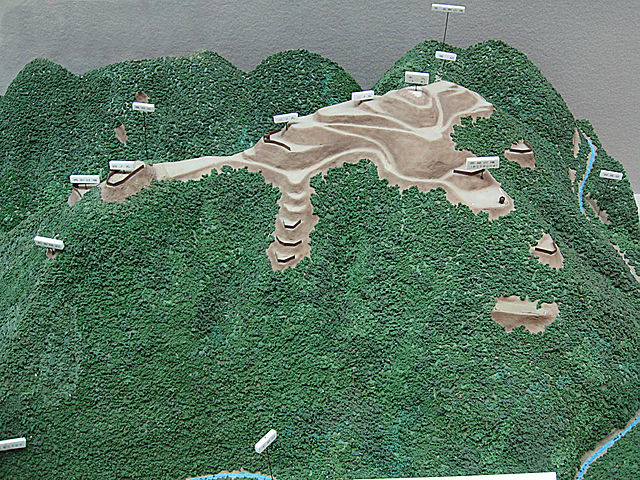
千早城の戦い~Siege of Chihaya
正成と僅か千名の兵士からなる部隊は、千早城に籠城し、幕府の大軍から何回も攻められました。 これは千早城の戦いと呼ばれ、日本で最初の本格的な山城での戦いでした。幕府軍の武士たちはこのような戦いでどう攻撃してよいかわからず、陣地や攻めどころといった戦略や計画もなく、しゃにむに城に突進していきました。正成とその部下たちは、敵と戦うのに大抵は盾や矢を使ったのですが、更には岩、丸太、油と火、煮えた汚物までも使って幕府軍を撃退したのでした。また、夜襲をかけて、敵を更に疲弊させました。この籠城戦は3ヶ月間続きます。
Masashige, with his small army of one thousand soldiers, was besieged in Chihaya Castle, by the massive Shogunate troops several times. It is called Siege of Chihaya, and it is the first big battle to occur in a mountain castle in Japan. The shogunate warriors didn’t know how to attack in such a battle, so they straightaway charged the castle without any strategies or planning, with regards to position or location of attack. Masashige and his army mostly used shields and arrows in order to fight the enemies. In addition, they also used rocks, logs, oil and fire, and even boiled filth to repel the Shogunate. They also delivered night attacks to further tire the enemies. The siege lasted for three months.

籠城戦の間、後醍醐天皇は島を脱出し、幕府の配下を含む全ての武士たちに協力を求めました。そして足利尊氏や新田義貞といった幕府の有力な部将たちが天皇方についたのです。千早城を攻撃していた軍勢はそれを聞き、撤退していきました。ついに正成は勝利し、幕府は千早城の籠城戦が終わってからわずか12日後に滅びました。
During the siege, Emperor Godaigo escaped from the island, and requested all the warriors, even those that backed Shogunate, to support him. Some influential retainer of the Shogunate, such as Takauji Ashikaga and Yoshisada Nitta, took sides with the Emperor. The troops attacking Chihaya heard about it and withdrew. Finally, Masashige won and the Shogunate was destroyed in just 12 days after the Siege of Chihaya ended.

正成と城の最期~End of Masashige and Castle
後醍醐天皇は建武の新政を始めますが、朝廷はすぐに後醍醐の南朝と、尊氏が別の天皇を立てて設立した北朝に分裂します。正成は最後まで後醍醐に仕えました。しかし、残念なことに1336年の摂津国(現在の兵庫県の一部)での湊川の戦いで尊氏に敗れてしまいます。千早城は正成の子孫により継承されますが、ついには1392年の北朝方の攻撃により落城しました。
Emperor Godaigo started Kenmu Restoration, but the kingdom was soon divided into his Southern Court and the Northern Court that Takauji established with another Emperor. Masashige followed Godaigo till the end, but was unfortunately defeated by Takauji in the Battle of Minatogawa, 1336 in Settsu Province (now part of Hyogo Prefecture). Chihaya Castle was kept by Masashige’s descendants, but eventually fell due to the attack of the Northern Court in 1392.
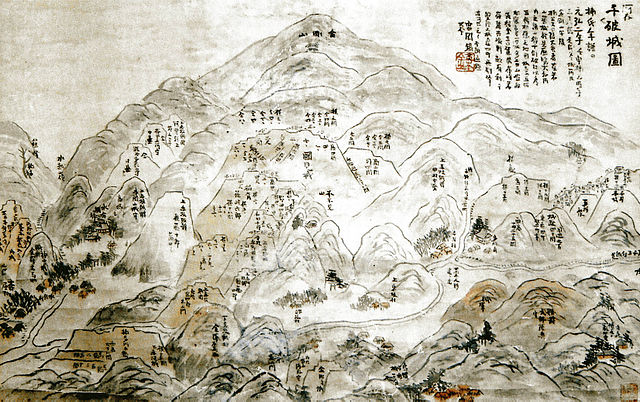
特徴~Features
急坂を登る~Climbing Steep Slope
現在、千早城跡への入口は、いまだに金剛山への玄関口になっています。ここから急坂に沿った500段以上の石段を登っていかねばなりません。石段は元はなかったのですが、神社が建設されたときに一緒に作られました。山道は所々曲がりくねっていて、過去は敵を防げるようになっていました。
Now, the entrance to the ruins of Chihaya Castle is still the gateway for Mt. Kongosan. You have to climb up over 500 steps of stones along the steep slope. The steps were not there originally, instead they were developed when a shrine was constructed . The trail is partly zigzagged to prevent enemies in the past.
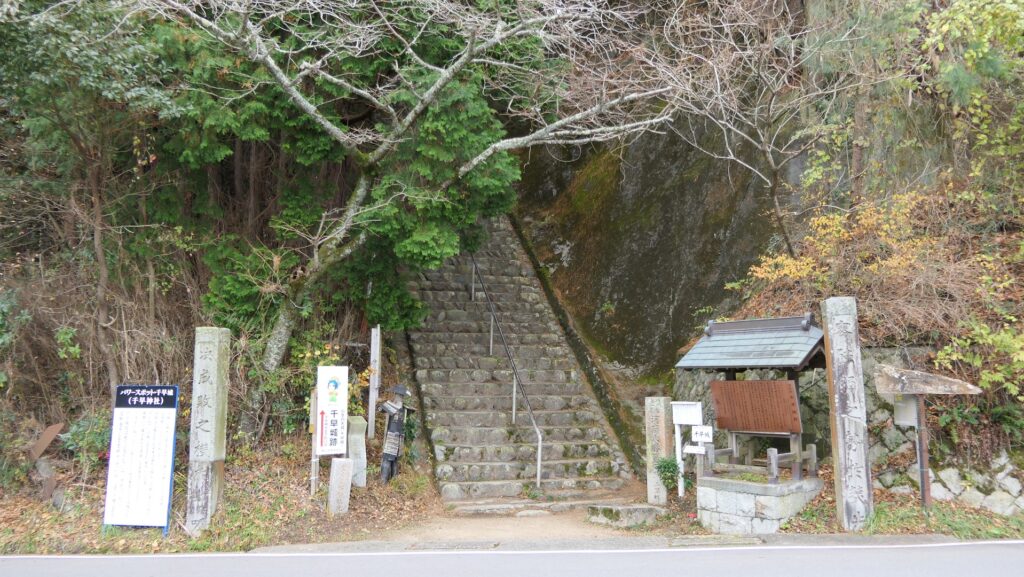


城の中心部は神社に~Center of Castle becomes Shrine
20分程かけて150mの高さを登っていくと、この城では最も広い郭である第四郭にたどり着きます。そこから更に山の鞍部を通る通路を通って第三郭に至ります。この郭には神社の社務所や、城の記念碑があります。
After about 20 minutes of 150m high climbing, you will reach the Fourth Enclosure which is the roomiest space in the castle. You can go further the route on a saddle of the mountain to the Third Enclosure. The enclosure has the shrine office and the monument of the castle.


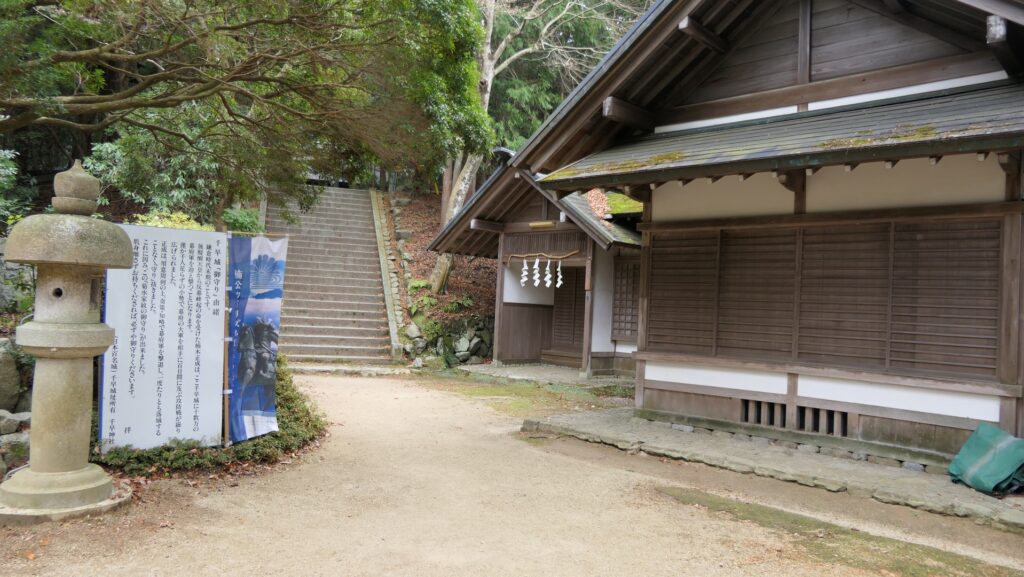
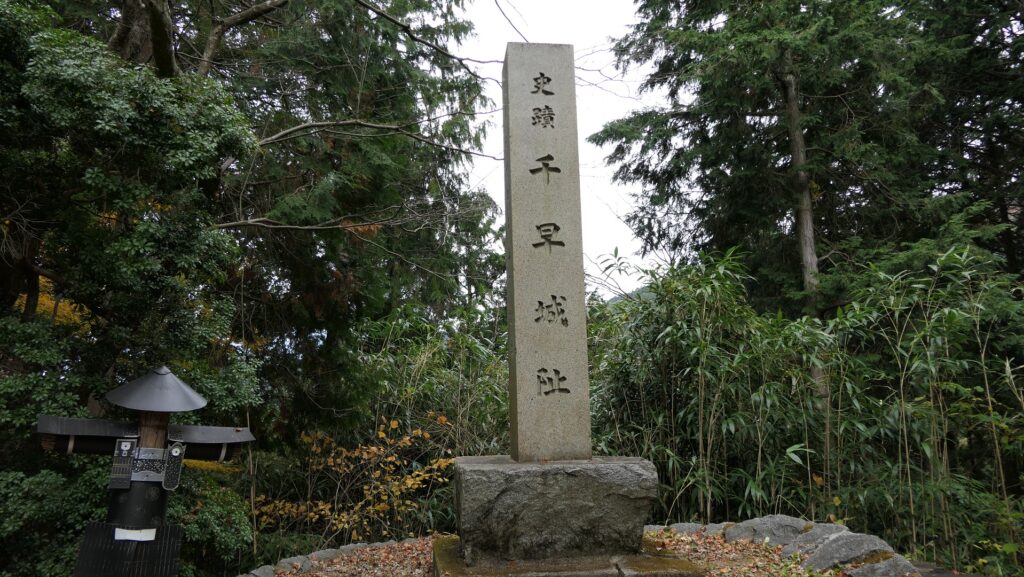
第三郭の後は第二郭となり、正成を祀る千早神社が鎮座しています。第一郭がまた第二郭の背後にありますが、聖地として一般の立ち入りは禁止されています。第一郭にはかつては見張り台のような建物があったと考えられています。
Chihaya Shrine that worships Masashige is on the Second Enclosure in at the back of the Third Enclosure. The First Enclosure is also at the back of the Second Enclosure, but it is closed to visitors of the shrine as it is considered the sanctuary. It is thought that a building, like a watchtower, stood on the First Enclosure in the past.

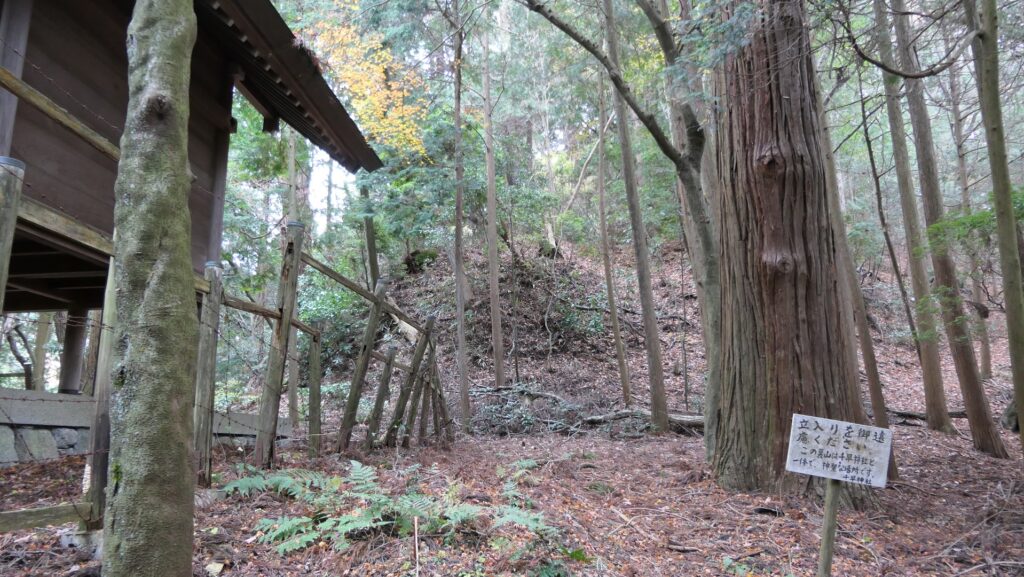
残っているものはあるか?~Does something original remain?
神社からは脇道が分かれ出ています。その道から見下ろすと、何か腰曲輪のようなものがあります。これらは元からあったものなのでしょうか。第三郭と第四郭の間の鞍部に戻ると、神社への脇参道を使って、山から下りることができます。谷底の一つは林道になっていて、そこから見ると坂道がとても急になっていて、この城がいかに自然の地形をうまく活用しているかがわかります。
The side tail goes from the shrine. From the trail, you can look down at something like bounded enclosures. I wonder if they are original or not. If you go back to the saddle between the Third and Fourth Enclosures, you can go down from the mountain using the side pathway to the shrine. One of the valleys’ bottoms has become a forest road. When you look up at the mountain from the road, you can see how steep the slope is, and how well the castle used natural terrain.


その後~Later History
千早城は長い間放置されてきました。ところが、明治維新後、状況は劇的に変化しました。北朝の子孫である明治天皇がどういうわけか南朝が正統と決めたのです。正成は、歴史家の間では優れた戦略家として知られてきましたが、突然日本史上最も有名な人物に祭り上げられてしまったのです。第二次世界大戦まで、彼の戦略とイデオロギーは全ての国民を忠良な臣民として教育するために利用されたのです。その結果、1879年に千早神社が城跡の上に建設されました。
Chihaya Castle had been abandoned for a long time. However, after the Meiji Restoration, the situation dramatically changed. Emperor Meiji who was a descendant of the Northern Court decided that the Southern Court was orthodox for some reasons. Masashige, who had been recognized as a great strategist only popular among historians, suddenly transformed into the most famous historical figure. His strategies and ideologies were used to educate all the nations in Japan, which was to be loyal subjects, until World War ll. As a result, Chihaya Shrine was built on the castle ruins in 1879.

現在でさえ、多くの年配の日本人は正成は単に忠臣だと思っています。一方で、若者の間では彼の名前さえ知らない人もいます。最近では歴史家たちは彼個人について一部研究が進んでいますが、いまだに謎のままです。この地は1934年から国の史跡に指定されています。
Even now, many old people in Japan think Masashige is just a loyal retainer. On the other hand, some young people even don’t know his name. Historians are recently studying about him as some parts of his personality still remain a mystery. The site has been designated as a National Historic Site since 1934.
私の感想~My Impression
私は千早城は日本の典型的な山城の先駆けだと思うのです。なぜなら敵から守るために、自然の障壁を最大限活用していたからです。その後の武士たちはこの城とここでの戦いから多くを学んだに違いありません。神社がよく整備され、正成の名が不朽なものとして残るのはよいことですが、せめて第一郭に立ち入らせてもらえないでしょうか。自治体の方にも城跡を史跡として整備し、もっと本当の正成を人々に知ってもらうようにすることを望みます。
I think that Chihaya Castle is the forerunner of typical mountain castles in Japan, because it used natural hazard at maximum to protect from enemies. Later warriors must have learned a lot from the castle and the battle on it. I am pleased to see that the shrine are is well maintained and Masashige’s name is kept intact .I hope that the shrine will allow visitors to enter the First Enclosure, and that the local government will preserve the ruins really like a historic site to let so that people know more about real Masashige more.

ここに行くには~How to get There
車の場合、阪和自動車道美原南ICから約30分かかります。城跡の入口周辺にいくつか駐車場があります。
バスの場合、近鉄長野線富田林駅から、金剛バス千早線の千早ロープウェイ前または金剛登山口行きに乗るか、
南海高野線か近鉄長野線の河内長野駅から、南海バス窪田線の金剛山ロープウェイ前行きに乗ってください。
どちらのケースでも、金剛登山口バス停で降りてください。
By car, it takes about 30 minutes away from the Mihara-Mnami IC on Hanwa Expressway. There are several parking lots around the entrance of the castle ruins.
By bus, you can take the Kongo Bus on Chihaya Line bound for Chihaya-Ropeway-Mae or Kongo-Tozanguchi from Tondabayashi Station on Kintetsu Nagano Line, or take the Nankai Bus on Kobuka Line bound for Kongosan-Ropeway-Mae from Kawachi-Nagano Station on Nankai Koya Line or Kintetsu Nagano Line. Get off at the Kongo-Tozanguchi bus stop in both cases.
リンク、参考情報~Links and References
・千早城 千早神社、千早赤阪村観光協会(Chihaya-Akasaka Village Tourism Association)
・「日本の城改訂版第103号」デアゴスティーニジャパン(Japanese Book)
・「日本の攻城戦55/柘植久慶」PHP文庫(Japanese Book)


